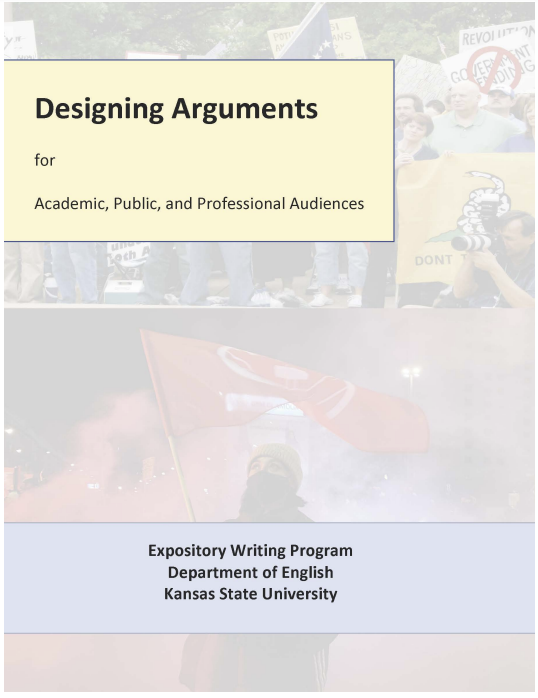Designing Arguments for Academic, public, and professional audiences
Editorial: New Prairie Press
Licencia: Creative Commons (by-nc)
Autor(es): Marzluf, Phillip
English 200 ("Expository Writing II") will introduce you to persuasive writing. Often when we think about persuasion, we think about winning an argument. Yet, as you'll see in this textbook, theories and practices of persuasion are much broader than that. In fact, throughout the semester you'll work to think of persuasion in terms of moving a reader in a number of different ways: helping a reader more fully understand a complex issue, making it easier for a reader to better hear you and your perspective, encouraging a reader to consider a different viewpoint, and asking a reader to take a particular action. You will also learn how to analyze and build different kinds of arguments, using some of the most useful and common tools of the trade, including rhetorical appeals, the Toulmin model, and Rogerian communication. Throughout all of these processes, we'll ask you to pay particular attention to your audience, continually keeping an audience's values, beliefs, and needs in mind.
[Manhattan: 2021]
Compartir:
Una vez que el usuario haya visto al menos un documento, este fragmento será visible.


